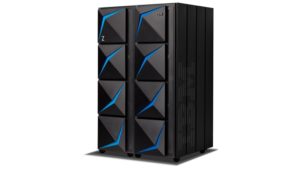Modernization has always been expensive and risky. Over the years, as one generation of hardware and software replaced another, IT executives have continued to struggle with the core dilemma: leave older technology in place and make do, or take the riskier path of rip and replace.
This dilemma invariably led to the increasing prevalence of legacy – dated technology that nevertheless remains in place because it still provides value, while IT leadership deems replacing it as too risky.

Today, two epic changes have transformed this dichotomy: first, modernization approaches have fundamentally improved, offering IT executives a wider range of options for dealing with such legacy –including modernizing applications in place and modularizing older applications in order to modernize them over time. And second, digital transformation priorities have upped the ante on legacy modernization.
In addition, the IT organization and its role within the enterprise have also transformed. IT is no longer simply a cost center in the enterprise. In the digital era, software has become strategically important as companies reinvent themselves as technology-driven organizations, thus raising the bar on modernization.
Business Considerations Drive Modernization Decisions
The ‘old world’ modernization dilemma – whether to leave legacy systems such as mainframes as-is or rip them out – invariably led to the increasing prevalence of older technology. Over the last twenty years or so, one innovation after another has chiseled away at this legacy challenge.
This challenge has always boiled down to an economic argument: how much is an out-of-date system costing the organization, vs. the all-in cost of modernizing that legacy – including all the indirect costs of making the transition from old to new, including downtime, retraining, customer resistance to change, etc.
Today, new technologies and modernization approaches have shifted this economic argument. Regardless of how far along your organization is on modernizing its legacy technology, there are important tasks that you can accomplish now.
The first goal: understanding the various ’new world’ modernization options open to you, and how to make the appropriate decisions about how to move forward given your particular legacy challenges.
The right strategy, therefore, will likely be a hybrid approach, consisting of combination of any or all of several modernization approaches, including leaving certain legacy assets such as the mainframe in place as well as either modernizing assets by updating them in place or modularizing them and modernizing certain areas of functionality. Replacing legacy assets has actually become a last resort.
The Modern Mainframe: Far From ‘Legacy’
In some situations, financial services, insurance, and travel firms in particular rely on older mainframe technology, as most of their currently running mainframe applications are several decades old.
In fact, these platforms have long been handling the core transaction processing at the heart of such organizations’ businesses and their innovation strategies for all that time.
Today, however, IT leaders face skills retention challenges as mainframe experts rapidly retire. The resulting skills shortage has increased the urgency of any modernization strategy. Does it make sense to invest in both the modernization of the mainframe as well as the hiring and training necessary to maintain a solid mainframe staff?
These decisions are becoming increasingly strategic as well, as the business challenges facing mainframe teams today are inevitably centered on digital transformation initiatives. The result: CIOs must make the critical decision regarding the role of the mainframe in their digital efforts.
The challenge and opportunity for such efforts today is bringing the mainframe into the modern IT context – modernizing its tooling, interfaces, and people to make the venerable platform an essential enabler of the innovation necessary for modern digital initiatives. In fact, IBM has been evolving the mainframe platform itself, as the z15 platform supports all of today’s modern workloads.
This modern IT context also squarely positions the mainframe as an intentional part of hybrid IT – the combination of cloud and on-premises environments that represents the reality for today’s enterprises.
There are no shortcuts, however. This transformation requires new processes, training, as well as tooling – and the changes won’t take place overnight. Nevertheless, such investments in both technology and people are absolutely critical, as the mainframe will continue to drive the business.
To enable such investments, market leaders like Broadcom are bringing open source technology to the mainframe – a paradigm that modern developers relate to. As a result, organizations are now able to make the mainframe data and services more accessible and treat mainframe like any other platform.
Efficiency, reliability, and stability are the raison d’être of the mainframe, and such capabilities are every bit as important as they have always been – and continued investment in both automation and optimizing the mainframe to maintain and improve these capabilities will always be priorities.
The Intellyx Take
How, then, does the organization continue to enjoy and optimize the core benefits of the mainframe while making it an integral part of the modern IT environment? Can this core transaction processing platform actually drive innovation?
It is in this real-word context, the ‘if it ain’t broke, don’t fix it’ principle is especially important. Replatforming existing mainframe applications, for example, is typically inadvisable, as such a move rarely delivers any substantial benefit, while losing the bulletproof reliability of the mainframe.
Instead, API enablement and refactoring of existing applications may be better bets. In fact, the digital transformation initiative may require the maintenance of older, on-premises assets while simultaneously calling for modern, cloud-native technologies. Only by getting this hybrid context for IT right will technology be able to drive innovation.
The bottom line: organizations should modernize many of their legacy assets including older mainframe applications by incorporating them into modern hybrid IT architectures and leveraging modern tooling to continue to update and maintain them. Such an approach promises to enable such updated technologies to participate fully in the modern digital world.
Copyright © Intellyx LLC. Broadcom and IBM are Intellyx clients. Intellyx retains final editorial control of this article.



